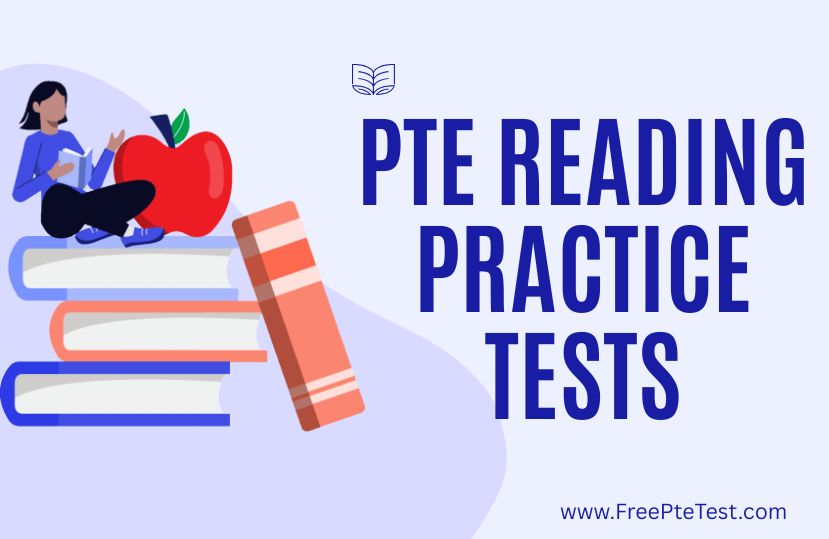The PTE Reading section, in particular, demands a blend of speed, comprehension, and analytical skills that many underestimate. With the latest updates to PTE Academic rolling out on August 7, 2025, the test has been refined to better mirror real-world academic and professional communication.
While these enhancements primarily introduce two new speaking question types—Respond to a Situation and Summarize Spoken Text—and subtle scoring adjustments for more accurate evaluation of communicative skills, the Reading section remains structurally unchanged. This stability is a boon for preparers, allowing focus on proven strategies without overhauling study plans.
However, the minor scoring tweaks, which emphasize holistic language use across modules, indirectly boost the importance of Reading practice, as stronger comprehension feeds into integrated tasks. In this article, I’ll draw on current 2025 trends, share expert tips, and provide examples to help you excel.
For those juggling multiple tests, resources like oetpro offer complementary vocabulary-building exercises that align well with PTE’s academic focus.
The PTE Reading section continues to evaluate your ability to process authentic academic texts, testing vocabulary, grammar, inference, and logical structuring. You should know the role of Vocabulary in PTE Success, it will definitely help you a lot. Lasting 29-30 minutes (slightly refined for better flow in the updated test), it features 13-18 questions drawn from diverse fields like science, history, and economics.
Texts are up to 300 words, sourced from real publications, ensuring relevance to university or professional settings. Success here isn’t just about reading—it’s about efficient information extraction under pressure.
In my coaching sessions, I’ve seen scores jump from 50 to 80+ through consistent practice, emphasizing why mock tests are non-negotiable.
Why PTE Reading Practice Tests Are Essential in 2025
In the post-update era, practice tests are more vital than ever, simulating the seamless integration of skills across the exam. They build familiarity with the adaptive format, where question difficulty adjusts based on performance, and help manage the untimed section’s pacing—crucial since lingering on one item can derail the rest. Benefits include:
- Question Type Mastery: Exposure to all five types hones specific skills, reducing surprises.
- Time Optimization: With no per-question timers, mocks teach allocation, e.g., 2 minutes max per Multiple-Choice.
- Skill Enhancement: Regular drills improve skimming for gist and scanning for details, key in academic texts.
- Error Analysis: Post-test reviews reveal patterns, like vocabulary gaps, for targeted fixes.
- Confidence Building: Mimicking the computer-based interface cuts test-day anxiety.
For example, a student of mine, Raj from India, struggled with time in early 2025 mocks but, after weekly timed sessions, aced his exam with an 85 in Reading by prioritizing quick scans.
Understanding PTE Reading Question Types in 2025
The 2025 updates preserve the five core types, but enhanced scoring rewards nuanced understanding, such as inferring tone. Here’s a breakdown with strategies and examples.
- Multiple-Choice, Single Answer: Read a passage and pick one correct option from 4-5. Tests main ideas or details.
Strategy: Skim first, then eliminate extremes. Example: Passage on climate change; question: “What is the author’s primary concern?” Options: A) Economic impact (correct), B) Wildlife only.
- Multiple-Choice, Multiple Answers: Select all correct options; partial credit with negative marking for wrongs.
Strategy: Confirm each with evidence; avoid guessing. Example: Passage on AI ethics; select two risks like bias and job loss.
- Re-order Paragraphs: Arrange 4-5 jumbled sentences into logical order.
Strategy: Spot topic sentence, use connectors like “however.” Example: Sentences on space exploration; reorder to start with history, end with future prospects.
- Fill in the Blanks (Reading): Drag words from a box to gaps in a text.
Strategy: Use collocations and grammar. Example: “Renewable energy sources have _____ the global economy.” Options: transformed (correct), destroyed.
- Fill in the Blanks (Reading & Writing): Choose from dropdowns; integrates writing precision.
Strategy: Check syntax. Example: “The discovery _____ scientists to rethink theories.” Dropdown: led (correct), leads.
Oetpro’s contextual exercises can supplement here, adapting OET-style blanks to PTE academia.

Effective Strategies for PTE Reading Success
From my expertise, 2025 success hinges on adaptive techniques:
- Skim and Scan: Skim for overview (10-15 seconds), scan for keywords. In a biology passage, scan for “photosynthesis” to answer details.
- Vocabulary Expansion: Learn 20 words daily; use roots like “chrono” for time-related terms. A client boosted from 65 to 79 by this.
- Timed Drills: Practice 30-minute sets; aim for 80% accuracy.
- Context Inference: No dictionary? Infer from surroundings, e.g., “ubiquitous” means widespread in tech contexts.
- Prioritize: Tackle confident types first; save Re-order for last if tricky.
Common Mistakes to Avoid
Avoid these pitfalls I’ve seen derail scores:
- Overthinking Re-order: Stick to logic, not overanalyze.
- Grammar Oversight in Blanks: Always verify tense/agreement.
- Time Traps: Don’t exceed 3 minutes on multiples; move on.
- Keyword Reliance: Read fully to avoid traps.
- Skipping Mocks: Untimed practice breeds false confidence.
Leveraging Resources for PTE Reading Practice
Free online platforms provide 2025-aligned mocks with AI feedback, mirroring updates. Focus on those with explanations for self-review. Supplement with academic reading from journals to build endurance.
Sample PTE Reading Practice Test
Try this 2025-style Fill in the Blanks (Reading & Writing):
Passage: Artificial intelligence is _____ the healthcare industry by enabling faster diagnoses. However, ethical concerns _____ privacy must be addressed to ensure equitable access.
Dropdowns: (1) revolutionizing/transforming/altering (correct: revolutionizing); (2) regarding/about/concerning (correct: regarding).
Explanation: “Revolutionizing” fits impact; “regarding” suits preposition use.
Tips for Maximizing Your PTE Reading Score in 2025
- Daily Practice: 1-2 hours on varied texts.
- Track Progress: Log scores; aim for incremental gains.
- Integrate Skills: Link Reading to Listening for holistic prep.
- Stay Informed: Note scoring tweaks favoring accuracy.
- Rest Well: Fatigue hurts comprehension; sleep before mocks.
In conclusion, the 2025 PTE Reading section, unchanged in core but enhanced in scoring context, rewards disciplined practice. As an expert, I urge using tools like oetpro for cross-test synergy. With strategies and examples above, you’re set for success.
Summary Points
- PTE Reading assesses academic comprehension.
- Five unchanged question types post-2025 updates.
- Untimed; master pacing.
- Mocks essential for realism.
- Consistent effort yields high scores.



